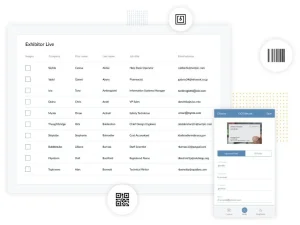Let’s face it—branding isn’t what it used to be. Gone are the days when a slick logo and a catchy tagline were enough. Today, customers glide between physical stores and digital platforms like they’re flipping channels. And if your brand feels disjointed—say, your app clashes with your in-store vibe—you’re basically handing customers a reason to bounce.
Why Hybrid Branding Matters Now
Think of your brand as a story. Whether someone’s scrolling your Instagram or walking into your flagship store, they should feel like they’re reading the same book—just different chapters. Here’s why that’s non-negotiable in 2024:
- Customer expectations: 73% of shoppers expect seamless transitions between online and offline interactions (Retail TouchPoints, 2023).
- Trust-building: Consistency breeds familiarity, and familiarity breeds trust. Simple as that.
- Competitive edge Brands that nail hybrid experiences see 2.3x higher customer retention (McKinsey).
The Pillars of a Unified Brand Experience
1. Visual & Verbal Harmony
Your color palette, fonts, and tone of voice should be siblings—not distant cousins. Ever walked into an Apple Store after using their website? Same minimalist aesthetic, same “speak human” copy. That’s not an accident.
2. Data Handshakes Between Channels
Imagine a customer adds a jacket to their cart online, then walks into your store… only to find zero record of it. Frustrating, right? Siloed data is the silent killer of hybrid experiences. Tools like CRM integrations and unified loyalty programs bridge the gap.
3. Tactile-to-Digital Triggers
QR codes on product packaging that unlock AR try-ons. In-store screens that sync with your mobile app. These aren’t gimmicks—they’re glue holding the physical and digital worlds together.
Common Pitfalls (And How to Dodge Them)
Even well-intentioned brands stumble. Here’s what to watch for:
- The “Frankenstein” effect: Piecing together disjointed tech solutions that don’t talk to each other.
- Over-indexing on digital: Forgetting that tactile experiences—like textured business cards or scent marketing—still pack a punch.
- Ignoring employee training: Your staff should understand the digital tools as well as the store layout.
Brands Doing It Right
Need inspiration? These companies are acing the hybrid game:
| Brand | Physical-Digital Sync |
| Nike | Members scan in-store QR codes to unlock exclusive app content |
| Sephora | Virtual Artist app lets users try makeup, then recommends in-store products |
| Starbucks | Rewards balance updates in real-time whether you order via app or cashier |
Future-Proofing Your Strategy
The line between physical and digital will keep blurring. Voice commerce, AI-powered fitting rooms, haptic feedback—it’s all coming. The brands that thrive will treat their presence as one fluid ecosystem, not two separate planets orbiting the same sun.
Honestly? It’s less about chasing every new tech trend and more about asking: Does this deepen our story, or just add noise? Get that right, and you’re golden.












More Stories
Adapting Brand Storytelling for Immersive Digital Experiences (AR/VR/Metaverse)
Crafting a Brand Architecture for Decentralized Autonomous Organizations (DAOs)
Crafting a Brand Strategy for the Creator-Led Business Model